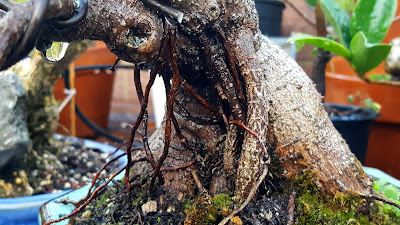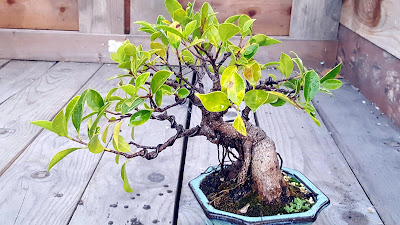I want to talk a little bit about bonsai seeds. Sometimes you see these things on eBay these “bonsai seeds”. The fact of the matter is that they are just seeds for whatever species of plant they're selling. Sometimes you see these kits at big-box stores in Hobby Lobby. They sell a bonsai kit which comes with a pot and soil and seed. Guess you're supposed to plant the seed in the potting soil and grow a bonsai tree. but these are just seeds for Japanese Black pine or what not.
 |
| Ponderosa pine |
It will take years for the seeds to grow to resemble anything like a bonsai. This is so especially if the plant is kept in a little pot its whole life. Sometimes when I tell people that I make bonsai they tell me about their experience with these bonsai kits. Some of those seeds never sprout. The truth is that for the novice some seeds could be hard to sprout. Some of the seeds need cold stratification, scarification, or warm stratification.
I'm not saying you should not buy them, but understand what you're getting into. They are just regular seeds. The fact of the matter is that a bonsai tree is a plant that somebody cultivates by pruning, wiring, and fertilizing. The seed itself does not a bonsai make.
 |
| Brazilian rain tree |
So when you buy these bonsai seeds just understand that it's going to take a lot of years for it to develop into anything that might come close to looking like a bonsai.
I grow trees from seeds. One of my favorite things to grow is Moreton Bay ficus or ficus macrophylla. These trees get pretty big and very quick. However, it takes a good number of years to get to a size worth showing. I am talking shohin size. Then you have to get the branching out right, the ramification. You can't do that on a young macrophylla until you cut the top tip part right where all the auxin is. When you cut that part it promotes more Branch growth but it slows down the growth of the whole tree over all.
 |
| Moreton Bay Ficus |
So, I want you guys to know that there are no seeds that grow into a bonsai. A bonsai comes from someone dedicating time and care in developing a plant so that it becomes a bonsai.










